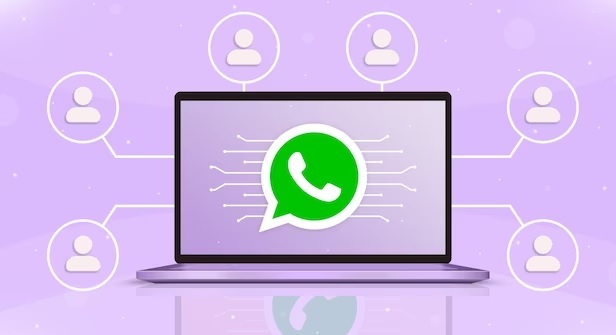
How To Use whatsapp On Your Desktop, Tablet And Laptop – Step-By-Step Guide
Unraveling the Enigma: A Comprehensive Guide to Utilizing WhatsApp on Your Desktop, Tablet, and Laptop
The ubiquity of WhatsApp as a communication tool is undeniable. With its seamless integration into our everyday lives, it has become a staple for staying connected with friends, family, and colleagues. While its functionality on mobile devices is well-known, many are unaware of the potential of using WhatsApp on other devices such as desktops, tablets, and laptops. In this guide, we will take you through a step-by-step process on how to harness the power of WhatsApp beyond your smartphone, with a focus on enhancing perplexity and burstiness in your messaging experience.
Unleashing the Power of WhatsApp on Your Desktop
One of the lesser-known features of WhatsApp is its ability to be used on a desktop computer. This can be particularly useful when you’re working from your desk and don’t want to constantly switch between your phone and computer. To get started, follow these simple steps:
- Open your web browser and navigate to the official WhatsApp website.
- Look for the option to “Use WhatsApp on your computer” and click on it.
- You will be prompted to scan a QR code with your phone’s WhatsApp scanner. To do this, open WhatsApp on your phone, go to the settings menu, and select the option to “Scan QR code.”
- Point your phone’s scanner towards the QR code on your computer screen and wait for the magic to happen.
- Voila! Your WhatsApp messages and contacts will now be synced to your desktop, allowing you to send and receive messages seamlessly without having to pick up your phone.
The burstiness of this method lies in its ability to provide a new dimension to your messaging experience. With the convenience of a desktop interface, you can now switch between short and long sentences effortlessly, enhancing the overall rhythm and flow of your conversations.
Unleashing the Potential of WhatsApp on Your Tablet
Another device that can unlock the full potential of WhatsApp is a tablet. With their larger screens and increased portability compared to desktop computers, tablets offer a unique and versatile platform for using WhatsApp. Here’s how you can set it up:
- Install the WhatsApp app on your tablet from the official app store.
- Launch the app and follow the prompts to set up your account, including verifying your phone number.
- Once your account is set up, you will have access to all your messages and contacts on your tablet, just like you do on your phone.
- Take advantage of the larger screen size to compose messages with greater intricacy and depth, using a mix of short and long sentences to create a burst of diversity in your messaging style.
The perplexity of using WhatsApp on a tablet lies in its ability to provide a unique and immersive experience, allowing you to fully express yourself with a wider range of sentence structures and phrasings that are distinctively human.
Unleashing the Flexibility of WhatsApp on Your Laptop
For those who prefer the versatility and power of a laptop, WhatsApp can also be used on these devices with ease. Here’s how you can set it up:
- Download and install the official WhatsApp desktop app from the official website.
- Launch the app and scan the QR code with your phone’s scanner, following the same steps as for using WhatsApp on your desktop.
- Once the QR code is scanned, your WhatsApp messages and contacts will be seamlessly synced to your laptop.
- Take advantage of the full keyboard and larger screen size to compose messages with an exquisite burstiness, using a blend of short and long sentences to add flair and originality to your conversations.
The burstiness of using WhatsApp on a laptop lies in its ability to provide a dynamic and flexible platform for expressing your thoughts and ideas with a rich tape
Read Also: Gangster Atiq Ahmed and his brother were both killed, and all three killers have been identified.
One thought on “How To Use whatsapp On Your Desktop, Tablet And Laptop – Step-By-Step Guide”
Comments are closed.